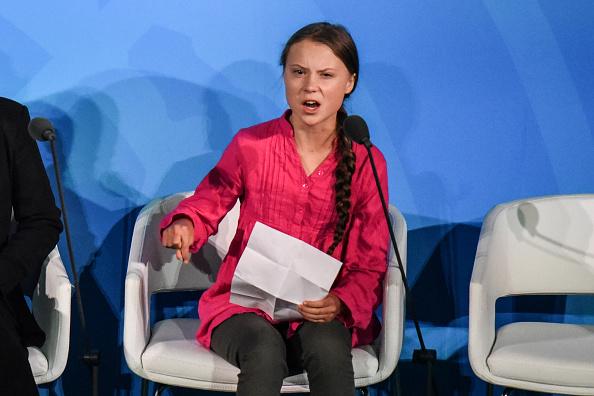Editor’s Note: Kotter’s Organizational Change model cited in this article includes “Establish a sense of urgency” as the first step toward organizational change. We have previously written about sense of urgency as an element of white supremacy culture. Because the author is referencing steps from an established model and using “sense of urgency” as a call to secure consistent support around DEIJ initiatives, we have not changed the language in this article. The Winters Group believes in both the importance of establishing support across the organization, and approaching this work strategically. We recognize that rushing into equity and justice initiatives haphazardly and doing so without engaging the perspectives of those most impacted, due to a manufactured sense of urgency, is a common manifestation of white supremacy culture and undermines the efficacy of equity and justice work.
I barely kept my head above water during the first year of my MBA. As a communicator by trade, I entered the program knowing that math was not my strong suit and that I would have to push myself during the first four quantitative-heavy courses. Once I got to my summer 2020 elective, I’d earned my stripes and felt freed up to study something that was more applicable to my day-to-day as an emerging DEI practitioner. So, I picked organizational change, a course that forever transformed my perspective on business strategy.
It felt serendipitous to study organizational change during a time when both the COVID-19 pandemic and racial injustice were reconstructing everything we knew about organizations. At the time, a resounding chorus of declarations against racism gave many employees a sense of cautious optimism as they hoped that organizations would truly advance for the better. It’s been nearly a year since then. And while jobs in DEI have risen 123%, it is hard to gauge what is truly different, writ large, within organizations. In fact, I believe many organizations are still trying to figure out both what they need to do and how they need to do it in order to affect true, lasting and transformational change.
I’ve found myself returning to one of the foundational change management models I learned during my course last summer: John Kotter’s eight-step process for leading change. Kotter’s model is an incredibly useful tool for mapping out organizational change, especially as it relates to the kind of systemic, long-lasting shifts that most companies are currently hoping to make. In the first part of this two-part blog post series, I’ll share the first four tenets of Kotter’s model: establish a sense of urgency, form a powerful guiding coalition, create a vision, communicate the vision.
Establish a sense of urgency
The sense of urgency to advance organizational racial justice was quite clear last year following the murder of George Floyd. But it feels like that sense of urgency may have waned for some in the weeks and months following. The fact of the matter is that a sense of urgency has to be established and reestablished through a combination of pulling on more cerebral levers (data, future trends, etc.) and tugging at the heartstrings (e.g., storytelling and conversations). Many events that transpired following George Floyd’s murder (U.S. Capitol insurrection, Derek Chauvin verdict, etc.) created upswings in the sense of urgency our nation felt around societal ills. It is important to understand that effective change in the DEI space is not contingent upon just one moment of urgency, but a general sense of urgency that must be restored and remembered at different inflection points.
Form a powerful guiding coalition
According to John Kotter, a powerful guiding coalition is a “group with shared commitment and enough power to lead the change effort.” I know some incredible, brilliant DEI practitioners… but they can’t do it alone. Affecting organizational change on such a wide scale requires active, ongoing support from senior leaders and managers who can serve as that powerful guiding coalition.
Affecting organizational change on such a wide scale requires active, ongoing support from senior leaders and managers who can serve as that powerful guiding coalition. Share on XCreate a vision
In his Harvard Business Review article Leading Change, Kotter wrote, “A vision always goes beyond the numbers that are typically found in five-year plans. A vision says something that helps clarify the direction in which an organization needs to move.” Most organizations are used to working on a quarterly, yearly and multi-year basis when it comes to setting and executing against strategy. But, the vision for advancing racial justice requires us to color outside the lines. It requires us to think about what our organizations will look like decades from now. Kotter went on to say that “In failed transformations, you often find plenty of plans, directives, and programs but no vision.” A vision should be a clear, simple and compelling statement about where your organization is headed. It should be something that you could share with any employee in five minutes or less and garner a response of understanding and curiosity. If you aren’t yet able to do that as it relates to your racial equity efforts, you may need to revisit crafting the vision.
The vision for advancing racial justice requires us to think about what our organizations will look like decades from now. Share on XCommunicate the vision
Once you’ve sat in a room with others hammering out the vision, it’s time to communicate it. It’s not enough for the vision to just live on the whiteboard where it was born or be known in a few small circles within the organization. Instead, it must be communicated via every possible channel…and even new channels that may not yet exist. But, organizations must be prepared to walk the talk. It’s not enough to simply say what the vision is, but it must also be exemplified through small acts and behaviors of everyone in the company. A common pitfall is behaving in ways that run counter to the vision.
It’s not enough for the vision to live on the whiteboard where it was born or be known in a few small circles within the org. It must be communicated via every possible channel…and even new channels that may not yet exist. Share on XJohn Kotter’s eight-step organizational change model is just one way to begin organizing your thoughts and plans around DEI efforts in response to systemic racism. In the second installment of this series, I’ll share the four remaining steps in the model. It is not enough for organizations to simply declare that they are anti-racist; they must truly and wholeheartedly be anti-racist.
It is not enough for organizations to simply declare that they are anti-racist; they must truly and wholeheartedly be anti-racist. Share on X





















I like how this article provides a great overview of change management in DEI.